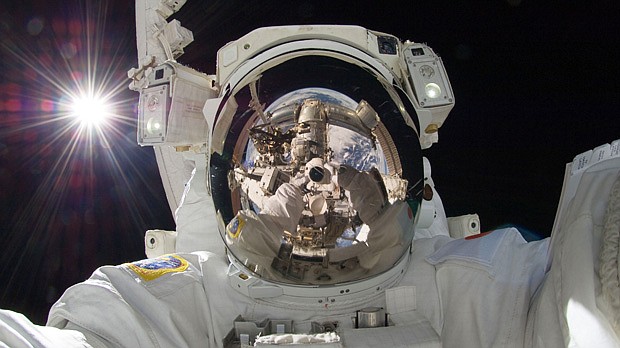- April 19, 2024
-
-
Loading

Loading

One of the most famous mental breakdowns in movie history didn’t happen on Earth; it happened in space.
“Dave, my mind is going,” the sentient HAL 9000 computer said after killing most of its ship’s crew out of paranoia. “I can feel it.”
UCF psychology professor Eduardo Salas wants to know what happens to an astronaut’s brain when they’re deep in space for months at a time — as will be the case when half a dozen astronauts take the upcoming first manned mission to Mars.
Aside from the obvious distance, the groundbreaking trip to the red planet will be a first for mental endurance. Fifty-five million miles is a long way from comfort, but provides an endless blank slate to ponder the unknown. Will I see my family again? Is five months around Mars an eternity? Am I doomed? Is my crew plotting against me? In space, no one can hear you dream.
Thanks to a massive grant, Salas now has $1.8 million in NASA funding to find out just what happens inside the mind of an astronaut on a mission to Mars.
Last year, NASA started accepting research proposals to gather foundational information for the ambitious mission. Salas idea: comparing astronauts’ performance in space with their mental and emotional health.
NASA officials wanted to know the same answers he did. Four months later, Salas received the grants from the agency’s Johnson Space Center in Houston, Texas.
“This is an incredible opportunity for UCF and an incredible opportunity for us to have an impact,” said Salas, who will begin research in August. “Even though it’s a small thing, being a part of this is an indescribable feeling of professional satisfaction.”
The first project involves creating software that detects levels of stress and fatigue in astronauts’ communication. The software will analyze keywords and phrases, and will help NASA be better prepared to monitor astronauts for potential risk factors.
Salas stressed that these factors play just as big of a role as the technology.
“It’s not only the technology that is important here, and it’s not only the medical conditions,” Salas said. “It’s also how well they coordinate, communicate, cooperate and maintain a healthy state of mind.”
Cognitive and emotional health will be put to the test on the approaching Mars mission in 2030. The five to seven chosen astronauts will embark on a 24- to 30- month journey – traveling for 10 months to reach the planet, spending five months living in its orbit and another 10 months coming back to Earth.
“Our long range goal is to increase our missions from one week, which was a moon mission back in the ‘60s, to maybe one month, and then maybe one year,” said Oviedo Councilmember Keith Britton, who works in NASA’s project planning and construction office. “We want to go leaps and bounds in the durations of our missions as we continue to explore space.”
“The longer these missions become, the more the stress levels and those types of psychological factors will come into play. I think the isolation is one of the bigger ones.”
Previous statistics have shown a connection between isolation and levels of depression, irritability and concentration. A common location for conducting isolation studies is in Antarctica, the closest landscape on Earth that compares to the harsh conditions of space.
In 1989, 50 scientists spent the winter in McMurdo Station, an American Antarctic research center. According to a study done by Professor Lawrence Palinkas of the University of California in 1992, 62.1 percent of the scientists reported feeling depressed; 47.6 percent reported feeling more irritable than usual; and 51.5 percent reported difficulty concentrating.
Professor Salas explained that teamwork also impacts the outcome of a mission, along with a healthy state of mind.
“Team cohesion and the crew’s well-being is paramount to the success of this mission, because without them getting along, having good team work and being in good state of mind throughout the mission, there could be catastrophic errors,” Salas said.
Professor Salas’ second project will measure the safety and efficiency of interaction between the astronauts and automated technology, observing how well the astronauts can complete objectives.
Britton concluded that studies like Salas’ will equip NASA astronauts to not only complete their mission, but do it safely.
“Any small slip up that happens could have catastrophic effects. We know all too well how that happens,” Britton said. “It’s very important that we do the very best we can to design these systems with enough rigor and redundancy to mitigate anything that can go wrong, and give the astronauts the best environment they can to do the research and carry out the mission that we give them.”
“On one hand, you’ve got the best people for the job, but on the other hand, you want to make sure that they’re able to do the job and aren’t put in harm’s way anymore than they have to be, because exploring space is still a very, very risky business. It’s a very unforgiving environment.”